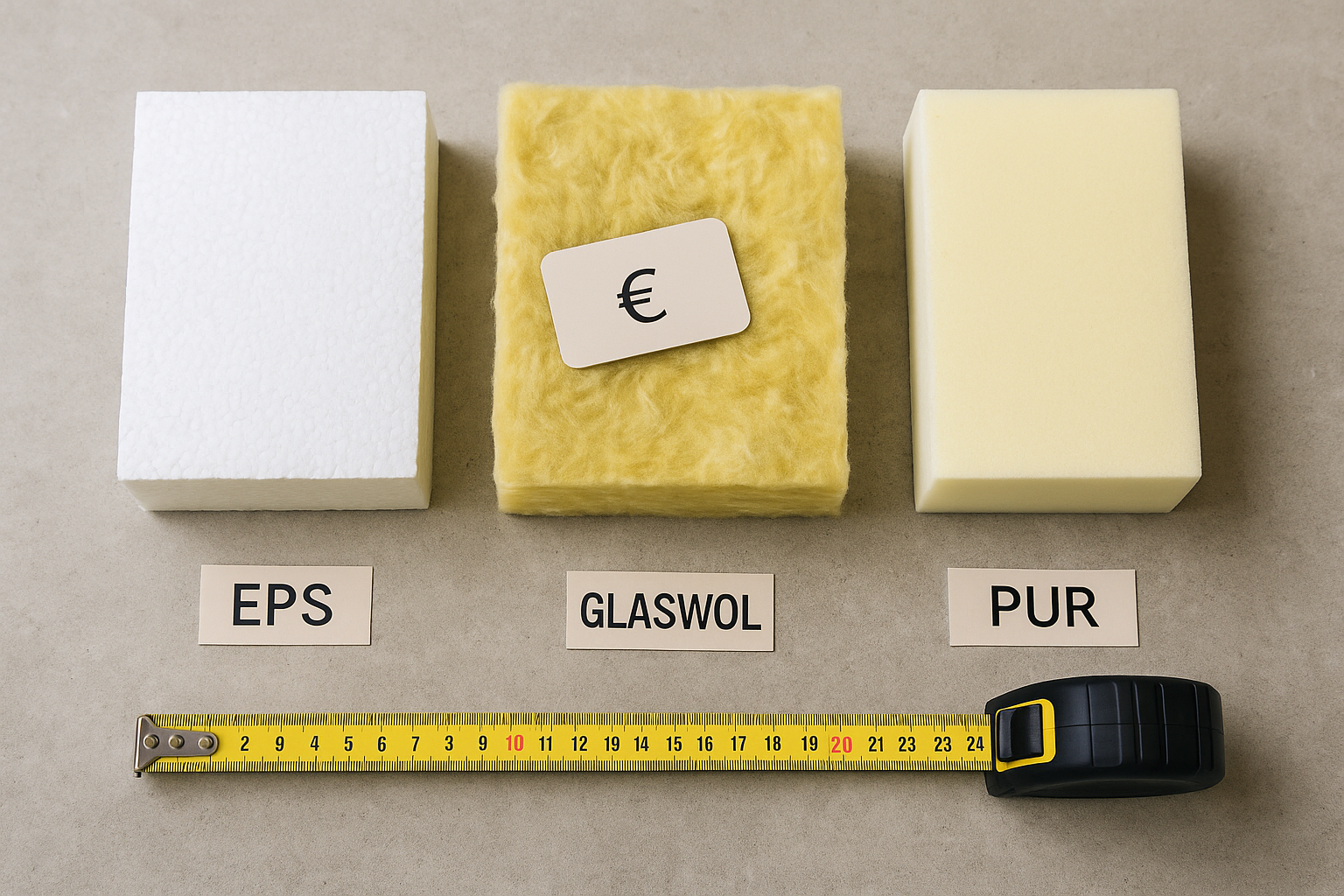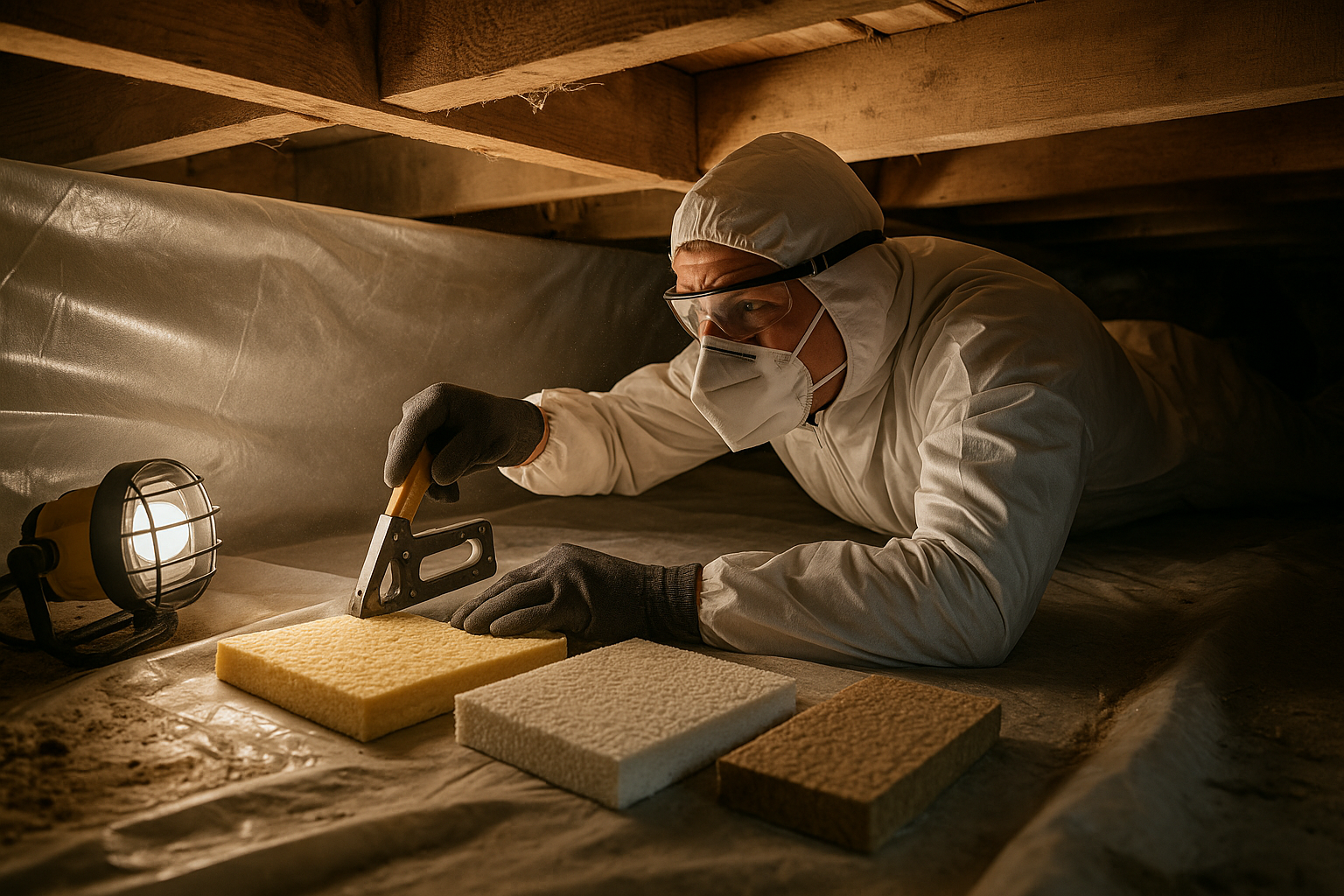Insulating the crawl space is a smart investment that is immediately noticeable in home comfort and on the energy bill. Cold floors, rising drafts or a difference in temperature between rooms are often signals that the home is losing heat via the floor. By properly insulating the crawl space, you prevent heat loss, increase the energy efficiency of your home and increase the value of the home.
Material costs
The biggest cost of crawl space insulation is usually the materials. The choice determines not only the price, but also the yield, longevity and moisture resistance. A good insight into the different types of insulation helps to find the right balance between costs and performance.
Types of insulation
The most commonly used materials are:
- Mineral wool (stone or glass wool) — affordable, heat- and sound-insulating, but sensitive to moisture.
- EPS (expanded polystyrene) — lightweight, affordable and moisture-resistant, with an insulation value of around 0.036 W/mK.
- XPS (extruded polystyrene) - stronger and more insulating (approx. 0.030 W/mK), suitable for humid crawl spaces, slightly more expensive than EPS.
- PUR or PIR foam — high-efficiency insulation (approx. 0.023 W/mK), seamlessly applied, prevents thermal bridges, but is one of the more expensive options.
- Cellulose (ecowool) - environmentally friendly, made from recycled paper, with a good insulation value, but requires professional installation.

Extra materials
In addition to the insulation material itself, various additional products are required for a solid finish:
- Vapor barrier film - prevents moisture from the home from penetrating into the insulation layer.
- Waterproof foil - protects insulation against condensation or moisture from the soil.
- Fasteners — plugs, screws and clamps for stable mounting.
- Sealing tape (joint tape) — to make seams between plates or panels airtight.
- Protective product against wood rot and mold - important for wooden floors or beams.
On average, these additional materials account for approximately 10 to 20% of the total insulation costs. Those who opt for quality foils and durable fasteners benefit from a longer lifespan and less maintenance.
Work costs
In addition to material costs, labor costs form an important part of the total price. You can choose between doing it yourself or having it done by a professional.
Install it yourself
Those who are handy and have the right tools can insulate the crawl space themselves and thus save on labour costs. Please note: the work is physically demanding and requires precision. An error in the seal or foil layer can result in heat loss or mold. The costs consist of materials, tools and your own time.
Specialists' services
A specialized insulation company provides craftsmanship that meets all standards. Technicians prevent thermal bridges, apply the correct insulation thickness and guarantee material and labor. The price is slightly higher, but the result is durable, safe and easy to maintain.

How to save
Crawlspace insulation is a serious investment, but with the right approach, you can cut costs without sacrificing quality.
Planning the activities
Good planning prevents waste and unnecessary costs. Have the crawl space inspected beforehand for moisture problems or imperfections. Make a clear step-by-step plan: clean, apply foil, install insulation and finish. This way, you can work more efficiently and save on materials and time.

Material selection
Compare not only the purchase price, but also the insulation value (RC value) and lifespan of each material. A slightly more expensive insulation with better performance often pays for itself quickly due to lower energy costs. Note seasonal discounts, joint purchasing actions or local subsidies for energy-saving measures, such as through the ISDE scheme or municipal energy advice. Optionally, combine crawl space insulation with floor insulation or moisture control. This way, you save on labour costs and benefit from one efficient approach.
Bricknest is happy to help you calculate the total costs, choose the right solution and coordinate implementation. Contact us today for a customized quote or personal advice from our insulation specialists.


